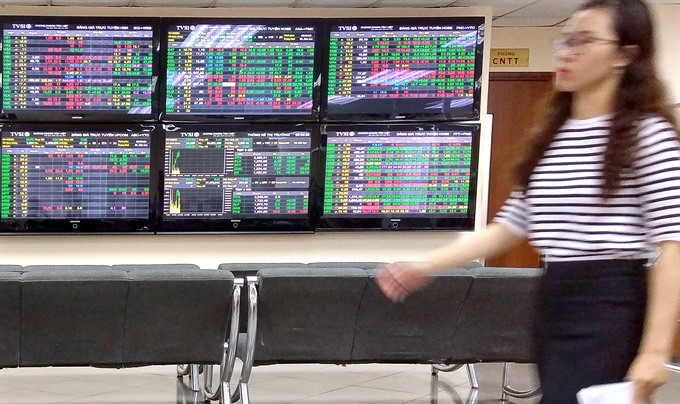 Economy
Economy

Investors need to closely monitor market trends and signals to assess whether the market will likely experience a bulltrap after last Thursday’s shocking decline—and to determine whether this stage is one of more risk than opportunity.
 |
| An investor at the trading floor of Tân Việt Securities Joint Stock Company in Hà Nội. — VNS Photo Đoàn Tùng |
HÀ NỘI — Investors need to closely monitor market trends and signals to assess whether the market will likely experience a bull trap after last Thursday’s shocking decline—and to determine whether this stage is one of more risk than opportunity.
A bull trap is a false signal that indicates a declining trend in a stock or index has reversed and is heading upwards when, in fact, the security will continue to decline.
The benchmark VN-Index on the HCM Stock Exchange gained 2.56 per cent to close Friday at 970.08 points, reversing its loss of 4.84 per cent in the previous session.
For the whole week, the VN-Index fell in three out of five sessions. The index lost 38.31 points or 3.8 per cent last week.
The minor HNX Index on the Hà Nội Stock Exchange rose 2.41 per cent to end Friday at 109.76 points after having decreased by 5.79 per cent on Thursday.
The northern market index dropped a total of 4.28 per cent on a weekly basis.
An average of nearly 295 million shares was traded in each session last week, worth VNĐ6 trillion (US$258 million).
The trading figures were down 4.2 per cent in volume and 37 per cent in value compared to the previous week’s numbers.
Vietnamese shares suffered one of their sharpest drops ever on Thursday after Wall Street’s worst losses in eight months triggered a surge of global selling that hit markets in Asia, too.
Last Thursday, the benchmark VN Index plunged 4.84 per cent or 48.07 points to close at 945.89, marking the worst decline on the benchmark index since early July.
Trần Xuân Bách, senior analyst at the Bảo Việt Securities Company (BVSC), attributed the market’s plunge on Thursday to the sharp fall of the global markets, which were hit by a massive sell-off in the
US stocks slid Thursday. Major indices in the
The Vietnamese stock market was also entering the correction stage after the recovery period from the beginning of July, while foreign investors continuously boosted net selling in recent weeks, Bách told tinnhanhchungkhoan.vn.
These trends have dampened investors’ confidence and created overwhelming fear over negative market movements, leading to the massive sell-off in the market midweek.
On Friday, shares bounced back as the sharp falls earlier had lowered stocks’ prices to attractive levels, triggering investors to bottom-fish.
According to Bách, investors keep a cautious stance as recovery sessions often appear after the market’s dive—the bull trap phenomenon, also known as a technical rise.
To avoid being caught in a bull trap, investors should lower their buying demand, Bách said.
Ngô Thế Hiển, deputy head of market analysis at the Sài Gòn-Hà Nội Securities Company, said investors should continue to monitor the developments of the market in the next sessions to determine whether the recovery momentum is stable or not.
A cautious approach is understandable as the market has been affected by plenty of unfavourable external information, Hiển said.
Investors who had managed to buy low price stocks in the past two sessions should continue to observe the market reaction in the next sessions, especially when the VN-Index reaches the point range of 975-995, he said. — VNS




